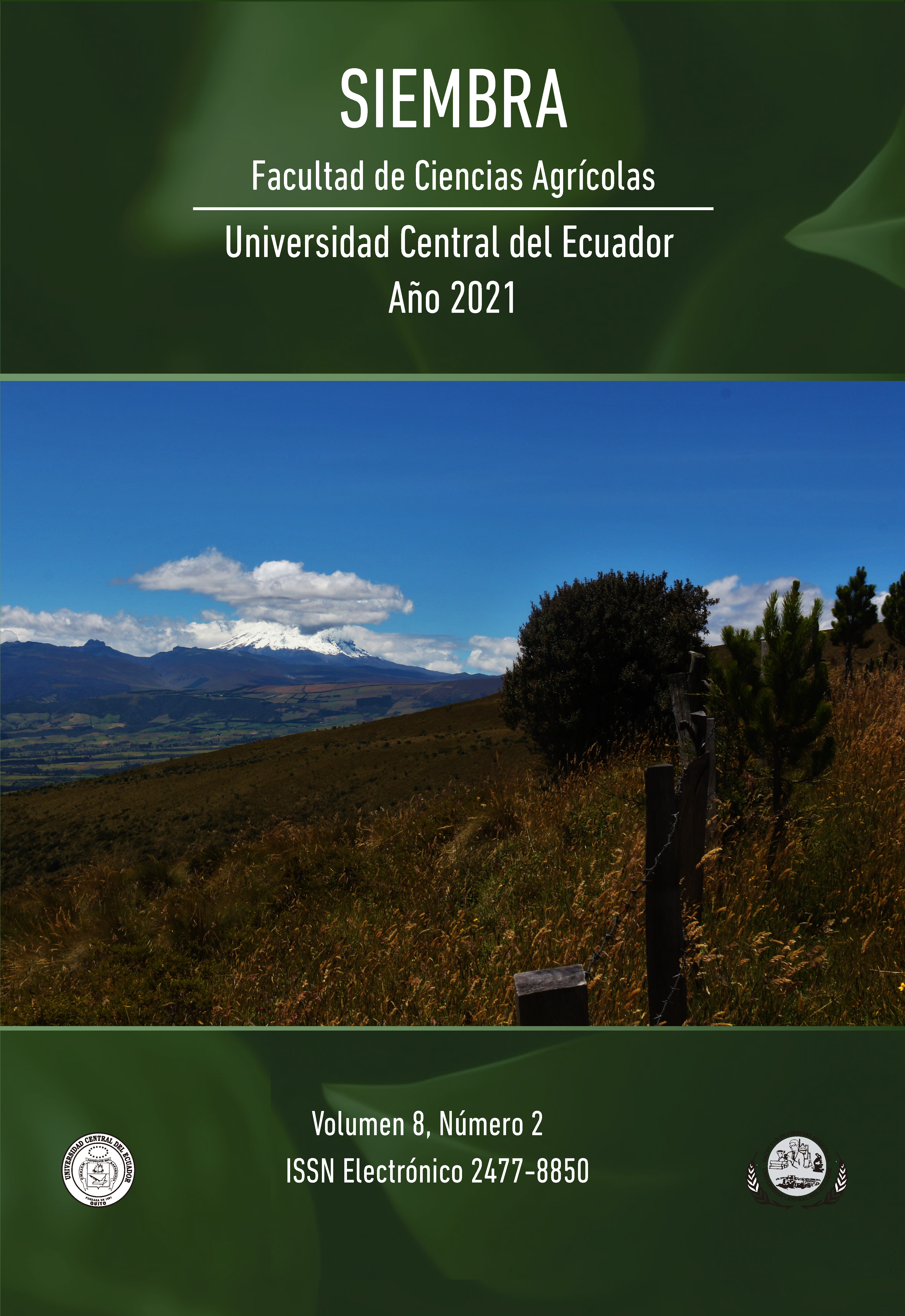Evaluación de la solidez del color en tejidos de lana y alpaca tinturados con biocolorantes extraídos de plantas y animales
Contenido principal del artículo
Resumen
Esta investigación consistió en evaluar la solidez del color de tejidos de lana y alpaca tinturados con colorantes extraídos de plantas nativas de la provincia del Azuay en el sur ecuatoriano. Las plantas tintóreas que se utilizaron fueron: Lomatia hirsuta (garau), Baccharis latifolia (chilca), Juglans neotropica (nogal), Brachyotum confertum (killuyuyo) y además se empleó el colorante de origen animal Dactilopius coccus (cochinilla). Se utilizó la metodología ancestral para el teñido de los hilos, con los que se prepararon muestras de tejido de punto que sirvieron para realizar las pruebas de solidez del color a la luz artificial, lavado manual con jabón neutro y alcalino, y la prueba de frote en húmedo y en seco. La evaluación de la pérdida de color de los tejidos se realizó mediante un colorímetro, se midió el color antes y después de las pruebas y se calculó la diferencia total de color (ΔE). Se encontró una mayor variación del color en el tratamiento de lavado de las muestras con jabón alcalino (el valor más alto fue 32) y en el resto de las pruebas se observó una mínima diferencia de color (1,4 en promedio). Haciendo la relación con la escala de grises los resultados corresponden a la calificación de satisfactorio para la mayor parte de muestras, por lo que se demostró que el color de los tejidos al utilizar garau, chilca, nogal, killuyuyo y cochinilla, es estable a la mayoría de los factores ensayados. Estos resultados son importantes porque sirven de base para la aplicación de algunos procesos para obtener una mayor resistencia del color en indumentaria elaborada con hilos teñidos con biocolorantes.
Descargas
Métricas
Detalles del artículo

Esta obra está bajo una licencia internacional Creative Commons Atribución-NoComercial 4.0.
Los autores que publican en Siembra conocen y aceptan las siguientes condiciones:
- Los autores retienen los derechos de copia (copyright) y ceden a Siembra el derecho de primera publicación del trabajo, bajo licencia Creative Commons Attribution License, que permite a terceros utilizar lo publicado siempre que hagan referencia al autor o autores del trabajo y a su publicación en esta revista.
![]() Esta obra está bajo una Licencia Creative Commons Reconocimiento-NoComercial 4.0 Internacional (CC BY-NC 4.0).
Esta obra está bajo una Licencia Creative Commons Reconocimiento-NoComercial 4.0 Internacional (CC BY-NC 4.0).
- Los autores conservan los derechos de autor y garantizan a Siembra el derecho de publicar el manuscrito a través de los canales que considere adecuados.
- Los autores pueden establecer por su cuenta acuerdos adicionales para la distribución no exclusiva de la versión de la obra publicada en Siembra, haciendo reconocimiento de su publicación inicial en la misma, como por ejemplo en repositorios institucionales.
Se autoriza a los autores a difundir sus trabajos electrónicamente una vez sea aceptado el manuscrito para su publicación.
Citas
Alonso, J. (2015). Manual de control de calidad en productos textiles y afines. Universidad Politécnica de Madrid.
Arroyo-Figueroa, G., Álvarez-Canelo, J. G., Medina-Saavedra, T., Dzul-Cauih, J. (2017). Evaluación de la estabilidad del color en el teñido de lana y algodón con extracto de cebolla morada (Allium cepa). Revista Sistemas Experimentales, 4(19), 1-6. https://www.ecorfan.org/bolivia/researchjournals/Sistemas_Experimentales/vol4num10/Revista_de_Sistemas_Experimentales_V4_N10_1.pdf
Carrera-Gallissà, E. (2015). Caracterización de tejidos. Principales ensayos físicos para evaluar la calidad de los tejidos textiles (1a ed.). Universitat Politècnica de Catalunya.
Garzón, G. A. (2008). Las antocianinas como colorantes naturales y compuestos bioactivos: Revisión. Acta Biológica Colombiana, 13(3), 27-36. https://revistas.unal.edu.co/index.php/actabiol/article/view/11337
Guirola, C. (2010). Tintes naturales y su uso en Mesoamérica desde la época prehispánica. Asociación Flaar Mesoamérica.
Jaramillo, H. (1988). Textiles y tintes. Centro Interamericano de Artesanías y Artes Populares.
Konica Minolta Sensing Americas, Inc. (2016). Entendiendo el espacio de color CIE L*A*B*. https://sensing.konicaminolta.us/mx/blog/entendiendo-el-espacio-de-color-cie-lab/#:~:text=El%20espacio%20de%20color%20L,con%20la%20percepci%C3%B3n%20visual%20humana
Martínez, M. J. (2011). Aspectos técnicos de la fabricación de colorantes empleados en la vestimenta femenina de la época romana: fuentes escritas y experimentación. En C. Alfaro, M. J. Martínez García, & J. Ortiz (eds.), Mujer y vestimenta. Aspectos de la identidad femenina en la antigüedad (pp. 185-212). Editorial Universidad de Valencia.
Norma ISO 105-C06:2010. Textiles. Ensayos de solidez del color. Parte C06: Solidez del color al lavado doméstico y comercial.
Palacios-Ochoa, C., & Ullauri, N. (2020). Revalorización de métodos ancestrales de tinturado natural en las provincias de Loja y Azuay del sur de Ecuador. Siembra, 7(1), 050-059. https://doi.org/10.29166/siembra.v7i1.1914 DOI: https://doi.org/10.29166/siembra.v7i1.1914
Restrepo Baena, O. J., Vázquez Jiménez, C. F., Bustamante Rúa, M. O. (2008). Influencia del pH en las propiedades pigmentarias de la goetita sintética. Dyna, 75(155), 163-170. https://revistas.unal.edu.co/index.php/dyna/article/view/1751
Vigueras, A. L., Portillo, L. (2001). Usos del pigmento de la grana cochinilla. En C. Llanderal, & R. Nieto (eds.), Cría de la grana cochinilla del nopal para la producción de pigmento (pp. 93-103). Editorial del Instituto de Fitosanidad.





